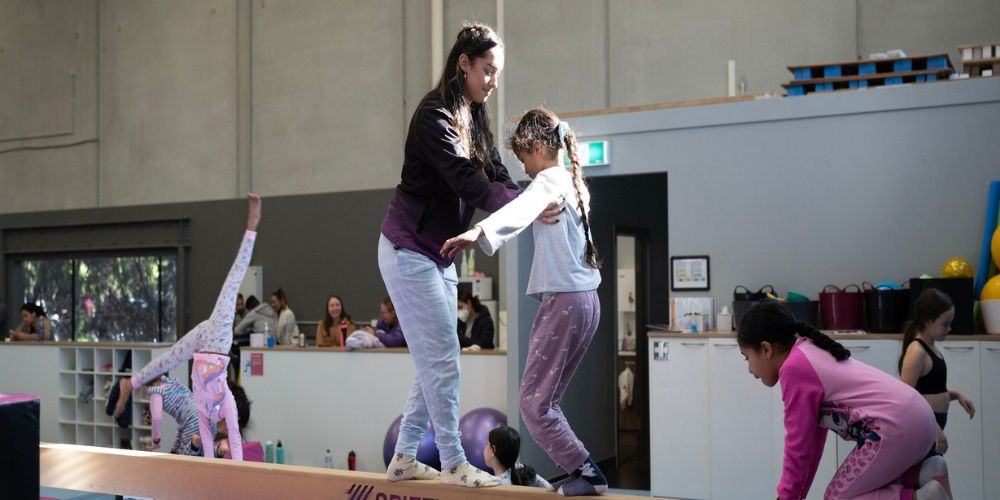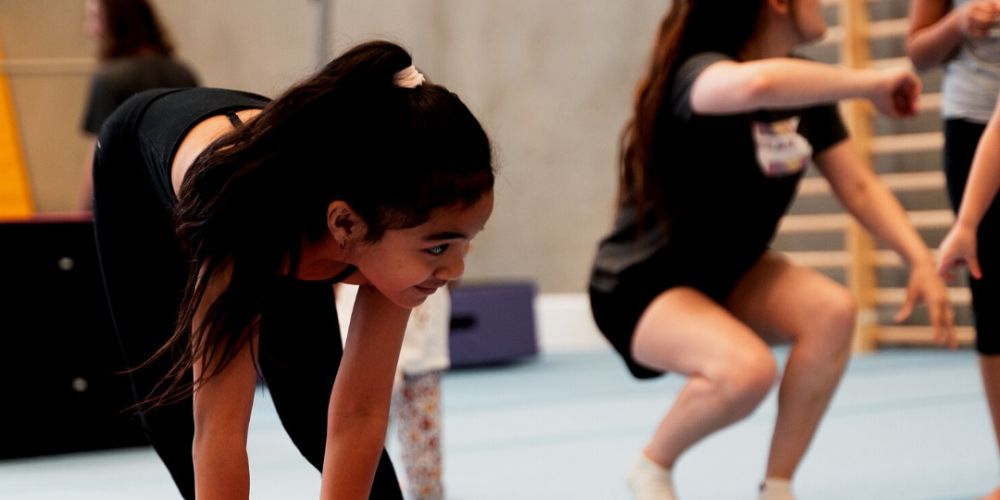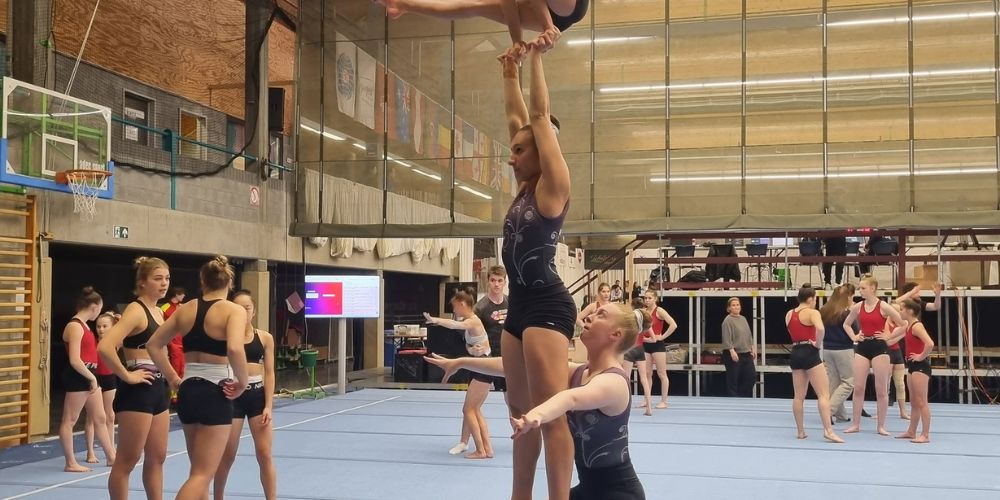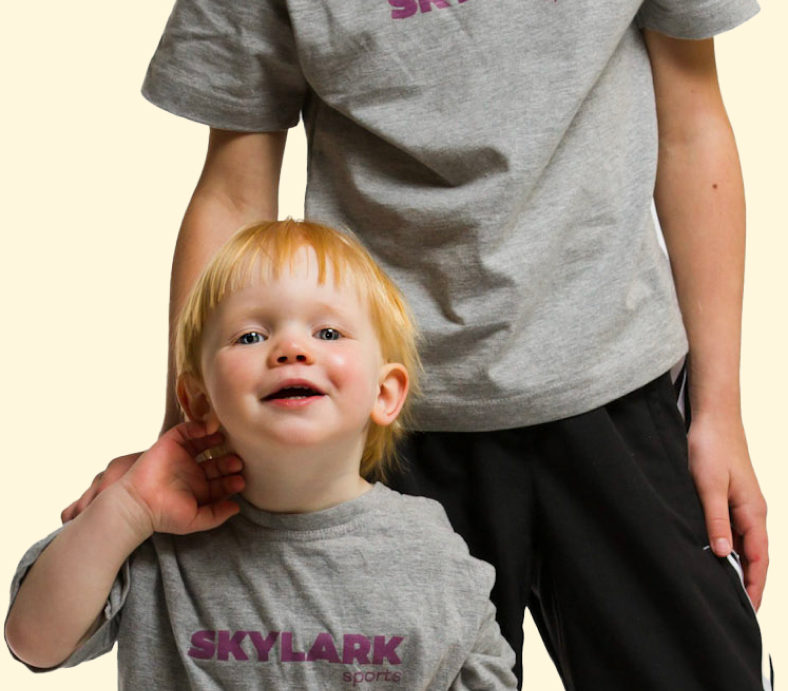Reading time: 6min 43 sec
When parents visit our gym in Melbourne, they often ask, "Is gymnastics the same as dancing? And which one is better for my child?" It's a great question and one that many parents ponder.
As a gymnastics trainer with years of experience, I've seen both worlds up close. While gymnastics move and dance share some similarities, they're also quite different in their ways.
In this blog, we'll explore the unique benefits of gymnastics and dance for kids, helping you decide which path might best fit your child's interests and development. So, let's dive in and uncover the wonders of both disciplines!
Benefits of Staying Active at a Young Age
Yes, you read it right! At an early age, you should encourage your child to stay active, whether it's through gymnastics, dance, or any other physical activity they enjoy.
According to the Centers for Disease Control and Prevention, " The Physical Activity Guidelines for Americans, 2nd edition recommends that children and adolescents ages 6 to 17 years do 60 minutes or more of moderate-to-vigorous physical activity daily."
Moreover, frequent exercise can help kids and teenagers get fit aerobically and respiratory, grow strong bones and muscles, manage their weight, lessen the symptoms of anxiety and sadness, and lower their chance of contracting diseases like:
- Heart conditions
- Cancer
- Diabetes type 2
- High blood pressure
- Osteoporosis
- Obesity
Engaging in physical activities such as dancing or gymnastics gives kids a constructive way to release their pent-up energy and feelings. It elevates mood, lessens tension and anxiety, and increases self-worth. Frequent physical activity provides a much-needed chance for children to detach, relax, and recharge in today's fast-paced environment, where they are frequently overburdened with academic obligations and digital distractions.
Gymnastics and Dancing - Comparison
Physical Skills
The main goals of gymnastics are to become proficient in flips, jumps, and balance routines on bars and beams. It's similar to an enjoyable workout that improves coordination, strength, and flexibility—all necessary for an active, healthy lifestyle.
While with dancing, kids can express themselves via diverse forms like ballet, hip-hop, or jazz while also learning how to move their bodies in new ways through the rhythmic adventure of dancing. It's a great way to have fun and improve musicianship and agility.
Structured vs. Creative
Gymnastics routines are like puzzle pieces that need to fit just right. There's a set routine to follow, which helps kids develop discipline and focus as they work towards mastering each move.
Meanwhile, dancing is a canvas for creativity. There are no strict rules to follow—just a stage to unleash your child's imagination and let them dance to their heart's content. It's an excellent outlet for self-expression and building confidence.
Competition vs. Performance
Young athletes compete in gymnastics contests, exciting occasions where they display their skills. They aim to please the judges with a flawless routine or perfect landing.
Kids who dance frequently go on to give stunning performances in recitals or shows, where they may shine in front of an audience and share their enthusiasm with friends and family.
Safety Considerations
There are risks associated with dancing and gymnastics. Still, these activities may also be thrilling and safe under the right guidance and supervision. In gymnastics, it's important to ensure the apparatus is in good condition and the coaches are on guard. When it comes to dancing, it's about teaching youngsters the right methods to avoid getting hurt when they're busting a move.
Which is Harder: Dancing or Gymnastics?
Determining whether dancing or gymnastics is harder is like comparing apples to oranges—both are challenging in their unique ways.
Gymnastics demands a high degree of strength, resilience, and physical strength. It involves mastering challenging techniques like flips, twists, and balancing feats, frequently done on equipment like vaults, bars, and beams. Gymnasts put in a lot of practice to master their routines, and there is often very little room for error. There's also the extra strain of competing, where athletes must perform perfectly in front of judges.
Dancing, on the other hand, demands a different set of skills. While it may not require the same level of physical strength as gymnastics, it does require excellent coordination, rhythm, and body control. Dancers must memorize complex choreography, execute precise movements, and convey emotion through performance. Each dance style presents challenges, whether mastering ballet's elegance, hip-hop's athleticism, or contemporary dance's gracefulness.
In terms of physical demands, both activities can be equally demanding, but they require different types of athleticism. Gymnastics may require more explosive power and strength while dancing emphasizes endurance, flexibility, and artistry.
But for me, the best answer is
How To Choose Between Gymnastics or Dancing for Your Kids?
Choosing between gymnastics and dancing for your kids can be a tough decision, but there are a few key factors to consider to help you make the right choice:
Interest and Passion
Start by considering your child's interests and passions. Do they love flipping and tumbling, or are they drawn to moving gracefully to music? Observing what activities they naturally gravitate towards can give you a good indication of which one they might enjoy more.
Physical Abilities
Consider your child's physical abilities and strengths. Gymnastics requires a lot of strength, flexibility, and coordination, while dancing focuses more on rhythm, balance, and expression. Think about which activity aligns best with your child's natural abilities and physical development.
Personality and Learning Style
Take into account your child's personality and learning style. Gymnastics tends to be more structured and goal-oriented, with set routines and skills to master. If your child thrives in a disciplined environment and enjoys working towards specific goals, gymnastics might be a good fit. On the other hand, if your child is creative, expressive, and enjoys exploring movement, dance might be more suitable.
Trial Classes
Consider enrolling your child in trial classes for both gymnastics and dance to see which one they enjoy more. Most gyms and dance studios offer trial classes or open houses where kids can try different activities before committing to a full session. This can allow your child to experience both and see the best fit.
Long-Term Goals
Think about your child's long-term goals and aspirations. Are they interested in pursuing gymnastics or dance competitively, or do they want to participate for fun and fitness? Understanding their goals can help guide your decision-making process and ensure you choose the right program that aligns with their ambitions.
Feedback and Guidance
Lastly, feel free to seek feedback and guidance from coaches, instructors, and other parents. They can offer valuable insights and advice based on their experiences working with children in both gymnastics and dance. Additionally, talking to your child about their preferences and listening to their input can help them feel empowered and excited about their choice.
What If They Like Both?
If your child likes both gymnastics and dancing, that's fantastic! It means they have a wide range of interests and talents to explore.
Here are a few options to consider:
Combine Both
A lot of our students like doing dance and gymnastics at the same time. This keeps things interesting and varied while enabling kids to benefit from both activities. Seek out programmes or studios that have flexible scheduling so your child can take dance and gymnastics sessions every week.
Try Different Styles
There are many styles and disciplines to discover in dance and gymnastics. If your child enjoys both, consider introducing them to other approaches within each discipline. For instance, they could try trampolining, rhythmic, or artistic gymnastics. They could experiment with ballet, jazz, hip-hop, or contemporary dance. This can assist them in identifying their areas of greatest enjoyment within each field.
Alternate Seasons or Sessions
If your child wants to do dance and gymnastics together but finds it too much to handle at once, consider switching up the seasons or sessions. They may devote one season to gymnastics and the next to dancing. This keeps people from feeling overworked and enables them to concentrate on each task.
Set Priorities
Discuss your child's hobbies and priorities when you sit down together. While experimenting with different hobbies is fantastic, managing your time and energy is critical. Assist your child in setting priorities for their hobbies and responsibilities, considering long-term objectives, skill development, and enjoyment.
Encourage Well-Roundedness
Remind your child that being well-rounded is a wonderful thing. Both gymnastics and dance offer valuable benefits, including physical fitness, artistic expression, confidence-building, and social interaction. By participating in both activities, your child can develop diverse skills and experiences that will serve them well in various aspects of life.
Frequently Asked Questions
Can my child explore different styles or disciplines within gymnastics and dance?
Yes! There are various styles within gymnastics, such as artistic, rhythmic, and trampoline. Your child can explore ballet, jazz, hip-hop, contemporary, and more in dance.
How can I help my child balance their time and commitments if they want to pursue both activities?
Sit down with your child and discuss their interests and priorities. Help them manage their time effectively by setting realistic goals and scheduling their activities to allow for rest and recovery.
What are the long-term benefits of participating in gymnastics and dance?
Both gymnastics and dance offer numerous long-term benefits, including improved physical fitness, enhanced coordination and flexibility, increased confidence and self-esteem, and opportunities for social interaction and teamwork.
Which is more costly? Dancing or gymnastics?
The cost of dancing versus gymnastics varies depending on location and program type. Still, both can incur expenses for classes, equipment, and additional fees for competitions or performances. Generally, gymnastics may be slightly more costly due to the need for specialized equipment and facilities.
Conclusion
Whether you choose gymnastics, dancing, or both for your child, the most important thing is to support their interests and passions. Consider their preferences, abilities, and long-term goals.
Feel free to explore different options to find what works best for them. Remember, gymnastics and dance offer valuable benefits, from physical fitness to personal growth, so let your child's happiness and enjoyment guide your decision.
Whatever path they choose, please encourage them to stay active, have fun, and embrace the journey of learning and growth ahead.




